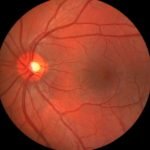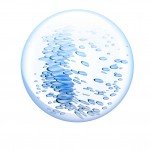Constipation: The Hidden Culprit
Gaia J. Mather, ND
Constipation is often treated more like an inconvenience rather than an overwhelming problem until it becomes just that, a serious problem. I view constipation as a life situation that is analogous to the boiling frog anecdote, in which the frog doesn’t notice the change in temperature until it’s too late. Some patients consider infrequent bowel movements normal, as that is all they have known their entire lives. So, what is the risk to the patient from chronic poor elimination?
Autotoxemia
“Bowel toxemia” explains the colon’s connection to a variety of conditions, whether acute or chronic. Dr. Kellogg wrote about this in his book, Autointoxication or Intestinal Toxemia in 1922. JH Tilden, MD used the term “autotoxemia” and stated, “toxemia is the cause of all disease.” The patient who has infrequent or incomplete elimination is at increased risk of reabsorbing the toxins the body is trying to eliminate. Autotoxemia is increased in patients who have compromised liver function or are poor detoxifiers. Toxins produced in the colon include byproducts of amino acid metabolism, such as histamine, tryptamine, cadavarine, phenol, indole, skatole and hydrogen sulphide. Methylmercury is formed during the liver’s attempt to detoxify mercury, and ends up in the colon. And toxic metabolites, such as ammonia, are produced from every cell in the body. With normal elimination in a healthy individual, these toxic products are excreted efficiently. However, the longer the stool stays in the large intestine, the more water and toxic chemicals are reabsorbed into the blood stream. Certain tissues may have an affinity for specific toxins, such as the kidneys and nervous system for mercury. Other patients may have a genetic susceptibility in certain organs, their “weak link,” which becomes diseased under the burden of an increased toxic load.
The colon is like a river that needs to keep moving to be healthy. If the river gets stagnant, the fish die, the pH is altered and opportunistic plants such as algae flourish. Proper pH and a healthy balance of gut flora are vital to a healthy large intestine. A diet high in animal protein is associated with sluggish colon functioning, contributing to constipation. It promotes an alkaline pH in the colon (due to increased ammonia production), which discourages the growth of acid-loving bacteria such as Lactobacillus acidophilus and encourages overgrowth of pathogenic bacteria, resulting in dysbiosis – “a causative factor in numerous chronic degenerative diseases, such as arthritis, autoimmune diseases, colon and breast cancer, psoriasis, eczema, cystic acne and chronic fatigue” (Pizzorno and Murray, 2002).
A diet rich in fiber and complex carbohydrates creates a slightly acidic pH, which encourages the growth of L. acidophilus. It has been shown that higher levels of acidophilus in the colon create a decreased risk for colon cancer by degrading cancer-causing enzymes. “Many strains of Lactobacilli possess potent systemic anticancer activity, having shown significant efficacy against Sarcoma-180 and Ehrlich ascites tumors” (Donovan, 1985). The presence of “good” bacteria in the gut, such as L. acidophilus and Bifidobacteria, reduces the numbers of pathogenic bacteria in several ways. “Lactobacilli synthesize many antimicrobial substances, such as lactic acid, acetic acid, benzoic acid, hydrogen peroxide and, perhaps most important, natural antibiotics” (Donovan, 1985).
Treatment
The first thing I do is put patients on a regular daily routine to increase their bowel tone.
- Every morning, before getting out of bed, they should gently massage their abdomen in a clockwise motion. This encourages the normal flow of stool toward the rectum. Many people will find that this alone will result in a daily morning movement.
- After rising, patients should drink at least eight ounces of warm (not tepid) water to stimulate the gastrocolic reflex. This reflex, resulting from the distension of the stomach, signals the terminal ileum to empty its contents into the cecum, which then stimulates mass peristaltic movements.
- A gentle walk for 15-20 minutes after each meal will also stimulate a healthy bowel transit time.
“In one study of 27 ambulant patients, mass movements followed a meal only when the patients moved around, but propulsive activity of the colon rarely occurred if the patients lay still after eating. This agrees with the well-known clinical finding that continued bed rest tends to produce constipation” (Davenport, 1982).
Hydrotherapy
Utilizing the healing power of water, both internally and externally, can have a dramatic influence in treating constipation. First we must be assured that our patients are drinking adequate amounts of high-quality water. I recommend that patients invest in a good-quality, carbon-block filter, which eliminates not only chlorine and sediment but also the majority of heavy metals, PCBs, volatile organic compounds and pesticides commonly found in drinking water. Most bottled waters are not only not chemical-free, they also contain plastics leached into the water from the containers.
How much water is enough? Eric Yarnell, ND, in his textbook Naturopathic Gastroenterology, recommends that patients “titrate to a dose that leads to urination every 1-1.5 hours.” For many, this averages around 64 ounces (or 2 liters) per day. Of course, the amount will vary depending on the person’s size, weight and activity level, and seasonal variations.
Patients can perform home hydrotherapy by ending their morning shower with a spray of cool (working up to cold) water over the abdomen to reflexively increase blood and lymph circulation to the intestines. Prolonged cold to the skin of the abdomen causes increased intestinal blood flow, intestinal motility and acid secretion to the stomach (Thrash and Thrash, 1981). Ideally, the patient could take a series of constitutional hydrotherapy treatments to stimulate the entire digestive tract. The combined action of alternating hot and cold to the chest and abdomen and using sine wave improves digestion, absorption and elimination.
Colonic hydrotherapy is a very effective way to treat constipation when coupled with an overall naturopathic plan. Not only will the intestinal lavage serve to rehydrate the colon, it will remove hardened fecal material that inhibits normal colonic motility. The water flushes toxins and pathogenic bacteria from the colon, which secondarily encourages the growth of beneficial bacteria. In addition to removing toxic chemicals produced by colon bacteria, colonic hydrotherapy also removes excess cholesterol, bile salts, hormones and cancer-producing enzymes from the large intestine. Massage of the colon creates mass peristaltic movements through the colon, which further encourages colonic emptying. Alternating warm and cool water can be used to tonify the musculature of the colon wall while increasing circulation of blood and lymph to the region. Along with a treatment plan that includes increasing fiber and exercise, a series of colonic treatments can greatly improve patients’ bowel functioning.
Fiber
Increasing fiber intake is important for a variety of reasons, and it is important to find the kind of fiber that works best for patients. Substituting refined carbohydrates with whole grains and cereals as well as including brown rice, oat bran, fresh fruits and vegetables, dried figs and prunes, raw nuts and seeds (including flax seeds), lentils, peas and dried beans will increase patients’ dietary sources of fiber. Certain types of fiber, such as pectin, also play a role in binding and eliminating heavy metals, toxins, cholesterol and bile acids from the system. Foods that are rich in pectin include apples, carrots, beets, bananas, cabbage, citrus fruits, dried peas and okra. In addition to dietary fiber, it may be necessary to add a fiber supplement to create a better effect. Many fiber products now contain a variety of fiber types to increase the overall benefit – including mucilages (such as psyllium), pectins, hemicellulose (like oat bran) and lignans (as found in flax seeds). I rarely use psyllium as a fiber supplement, as I find it binds up many patients who have chronic constipation. Most people fare better with a fiber supplement that relies on a combination of fiber sources.
Resolving Difficult Cases
Some patients seem to have tried everything, without results. Keep in mind that there are two main types of constipation: atonic and spastic. Atonic often results from chronic lack of exercise, poor diet and low water intake. Resolving these cases may take time, but improvement should be visible once the patient makes the appropriate lifestyle changes. The spastic type of constipation can present a challenge to treat. Patients with spastic constipation are often of the type-A personality. They may have muscle spasms, twitching or cramping elsewhere in the body. They often have issues of perfectionism and control. … Dare I say it? These are the anal retentive-type patients.
The colon, rather than lacking tone, becomes spastic in areas, creating a temporary block in the flow of stool. No matter how many laxatives these patients take, the constipation doesn’t respond. Due to their irritant effects, the laxatives only make the situation worse. Often, these patients will present in a state of near panic, demanding that the ND do something to help them. These patients may have been using laxatives for years to ensure that they have a daily bowel movement. In patients who are dependent on laxatives, it is important to wean them off of the laxatives slowly, adding a fiber supplement while decreasing the laxative dose so that they eventually replace the laxatives with a good, daily fiber supplement to encourage healthy elimination. Also of importance is to decrease stimulants (which can add to the colon spasticity).
I find it helpful to also supplement with EFAs and magnesium to aid normal GI motility. Food allergens can trigger spastic constipation. I have had patients completely relieved of life-long constipation simply by removing cow’s milk and dairy from their diets. In the Textbook of Natural Medicine, Drs. Murray and Pizzorno write, “Approximately two-thirds of patients with [irritable bowel syndrome] IBS have at least one food allergy: Most common allergens are dairy products (40%-44%) and grains (40%-60%).” In my experience, the foods that make the most difference when avoided completely are dairy products and coffee.
Treating constipation can be a real clinical challenge. If the problem is long-standing, it may take months to find the underlying cause and remedy the situation. If we are truly doctors who practice preventive medicine, we must acknowledge the long-term effects of chronic constipation on our patients. We all are being exposed to ever-increasing levels of chemicals and pollutants in the greater environment. The patient who suffers constipation simply stores and re-circulates a greater and greater load of these toxins. Eventually the scale tips and the tissues succumb under the toxic load, leading to cancer, heart disease, arthritis, diabetes, autoimmune disease and more. In practicing our best medicine, we must recognize that efficient elimination is a cornerstone of good health and longevity, and treat the patient accordingly.
 Gaia Mather, ND entered the healthcare field as a massage therapist in 1983, later receiving training in colonic hydrotherapy in 1985. After graduating from NCNM in 1990, she began teaching a course in colonic hydrotherapy in 1991. She currently teaches several courses at NCNM including hydrotherapy, palpation, Swedish massage, advanced massage and energywork. Dr. Mather has a private practice at the NCNM teaching clinic and continues to practice massage and colonic hydrotherapy.
Gaia Mather, ND entered the healthcare field as a massage therapist in 1983, later receiving training in colonic hydrotherapy in 1985. After graduating from NCNM in 1990, she began teaching a course in colonic hydrotherapy in 1991. She currently teaches several courses at NCNM including hydrotherapy, palpation, Swedish massage, advanced massage and energywork. Dr. Mather has a private practice at the NCNM teaching clinic and continues to practice massage and colonic hydrotherapy.
References
Kellogg JH: Autointoxication or Intestinal Toxemia (ed 3). Battle Creek, 1922, The Modern Medicine Publishing Company.
Tilden JH: Toxemia Explained. Yorktown, 1926, Life Science.
Collins D: Colon therapy. In Pizzorno J, Murray M (eds): Textbook of Natural Medicine (ed 1), Seattle, 1985, John Bastyr College Publications.
Donovan P: Bowel toxemia permeability and disease: new information to support an old concept. In Pizzorno J, Murray M (eds): Textbook of Natural Medicine (ed 1), Seattle, 1985, John Bastyr College Publications.
Davenport H: Movements of the colon. Physiology of the Digestive Tract (ed 5), Chicago, 1982, Year Book Medical Publishers Inc., p92.
Pizzorno LU, Pizzorno Jr JE, Murray MT: Irritable bowel syndrome, Textbook of Natural Medicine (ed 3), 2006, Churchill Livingston.
Yarnell E: Constipation. Naturopathic Gastroenterology, Arizona, 2000, Naturopathic Medical Press, p281.
Balch J, Balch P: Natural food supplements. Prescription for Nutritional Healing (ed 2), New York, 1997, Avery Publishing Group, pp52-53.










